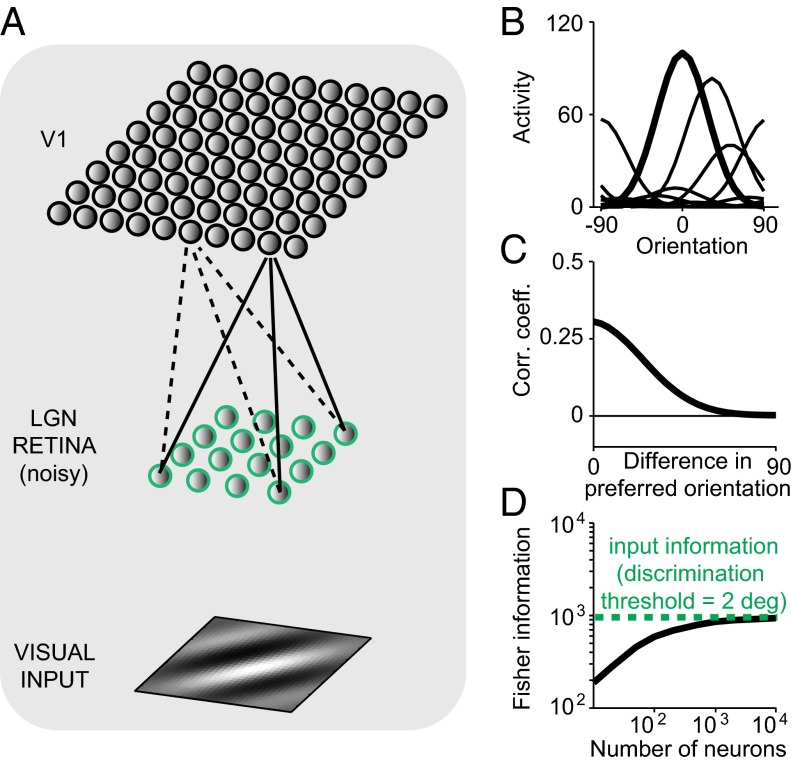Fig. 1.
A feedforward orientation network accounts for heterogeneous tuning, realistic correlations, and limited information. (A) Schematic of the orientation network. (A, Bottom) The visual input is a Gabor image. (A, Middle) Neurons in the sensory periphery add noise to the visual inputs. (A, Top) Due to cortical expansion, V1 neurons share part of their noisy inputs, introducing noise correlations and limiting information about any stimulus. Note that we model only one cortical hypercolumn: The receptive fields of all neurons in the population fully overlap in space. (B) Orientation tuning curves for a subset of neurons. (C) Average pairwise noise correlations in the network are positive and decay with the difference in preferred orientation. (D) Information as a function of the number of neurons in the V1 layer (solid black line). Information in V1 saturates for a large number of neurons. In this particular case, the network is optimal as indicated by the fact that information saturates at the upper limit of information imposed by the input information (dashed green line). The noise in the sensory periphery was set to yield a discrimination threshold of 2°. Simulation parameters are specified in SI Appendix, Table S2.

